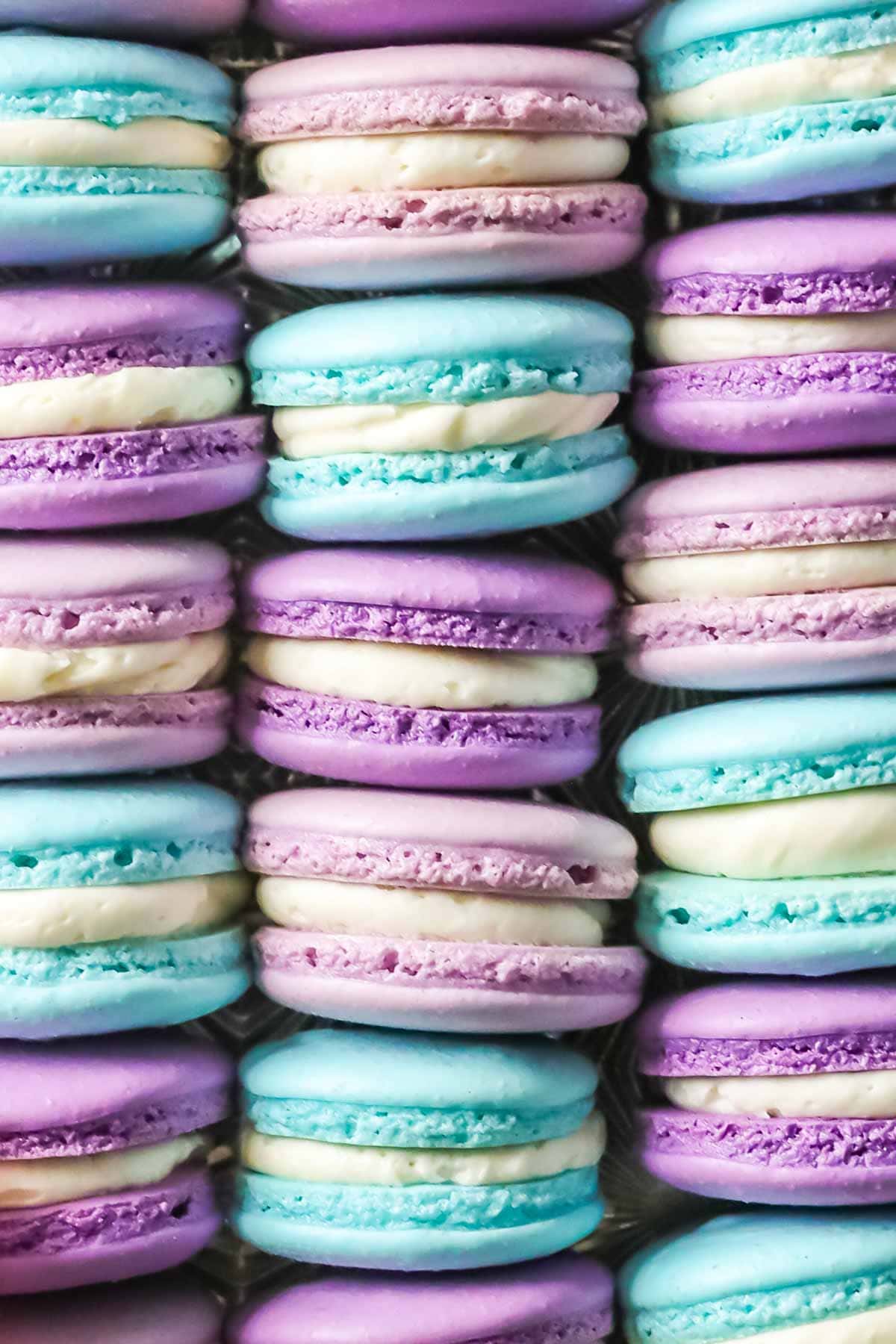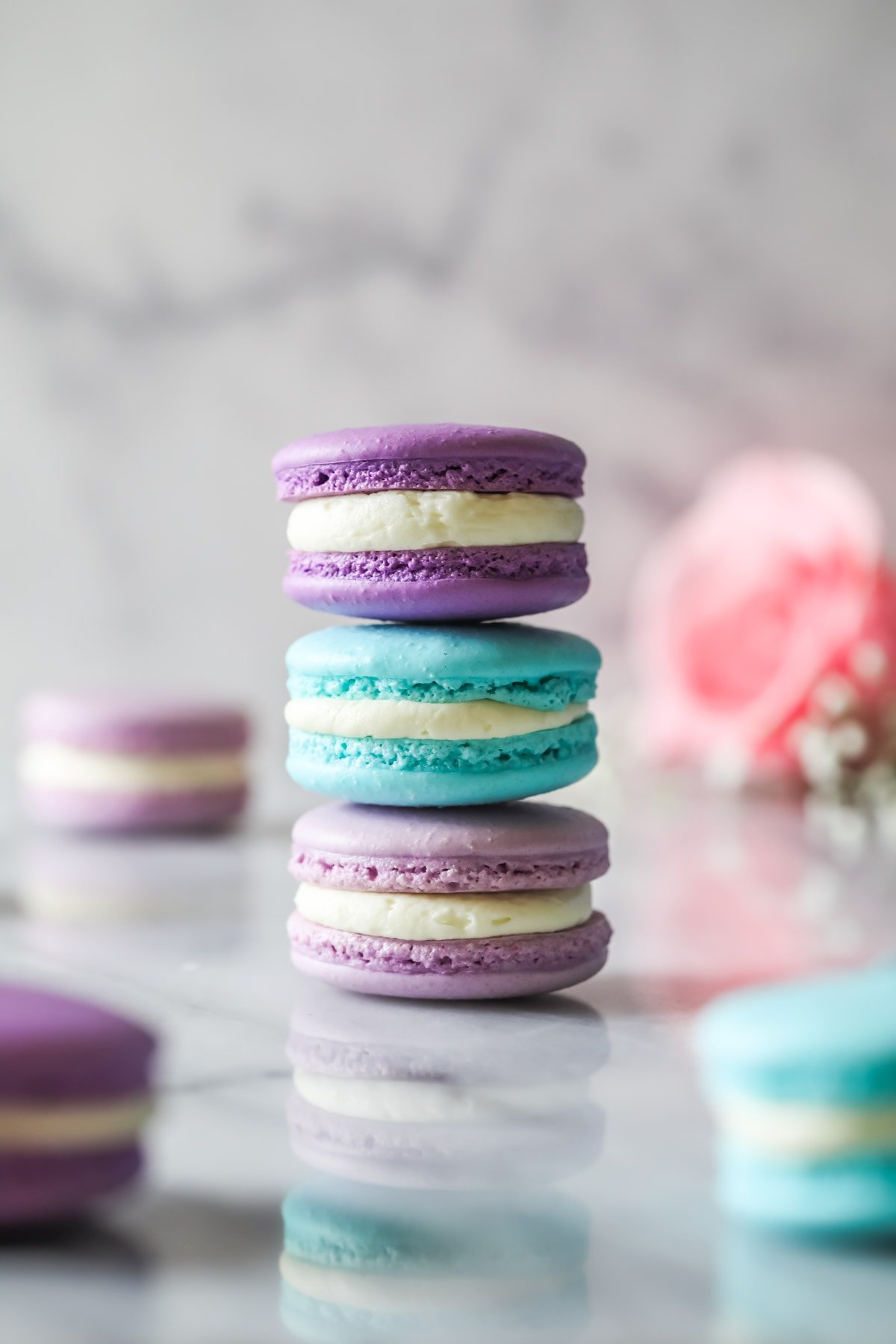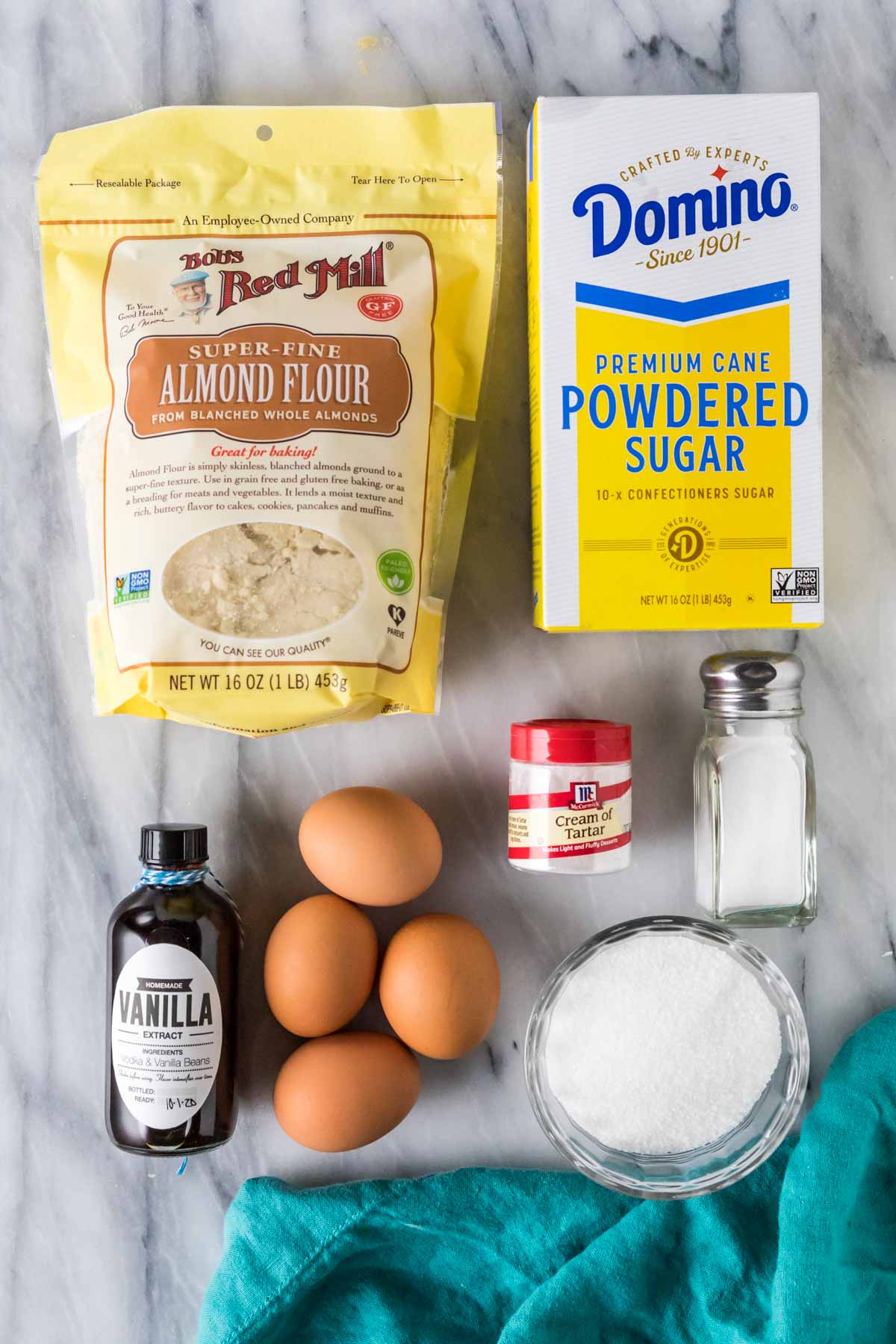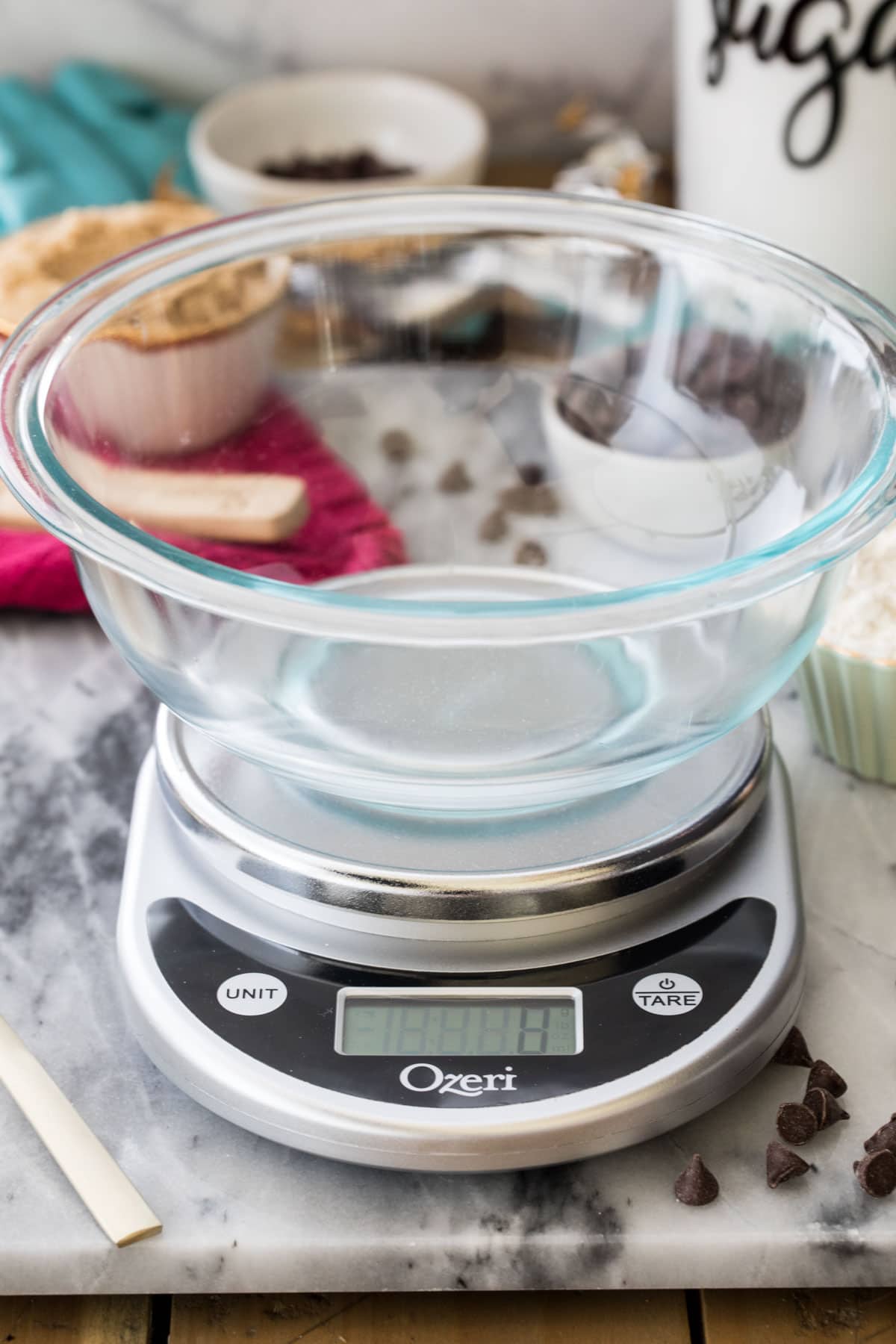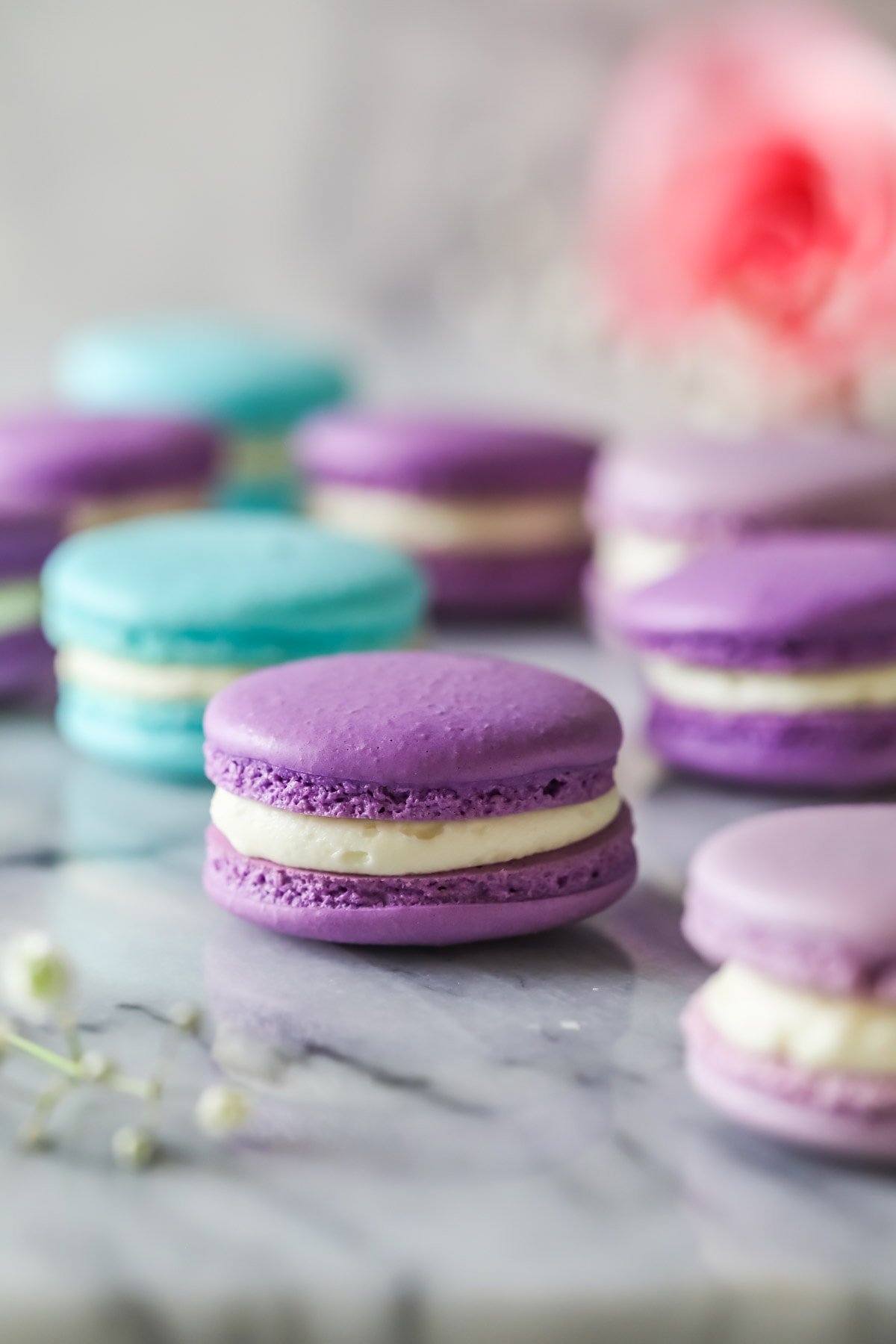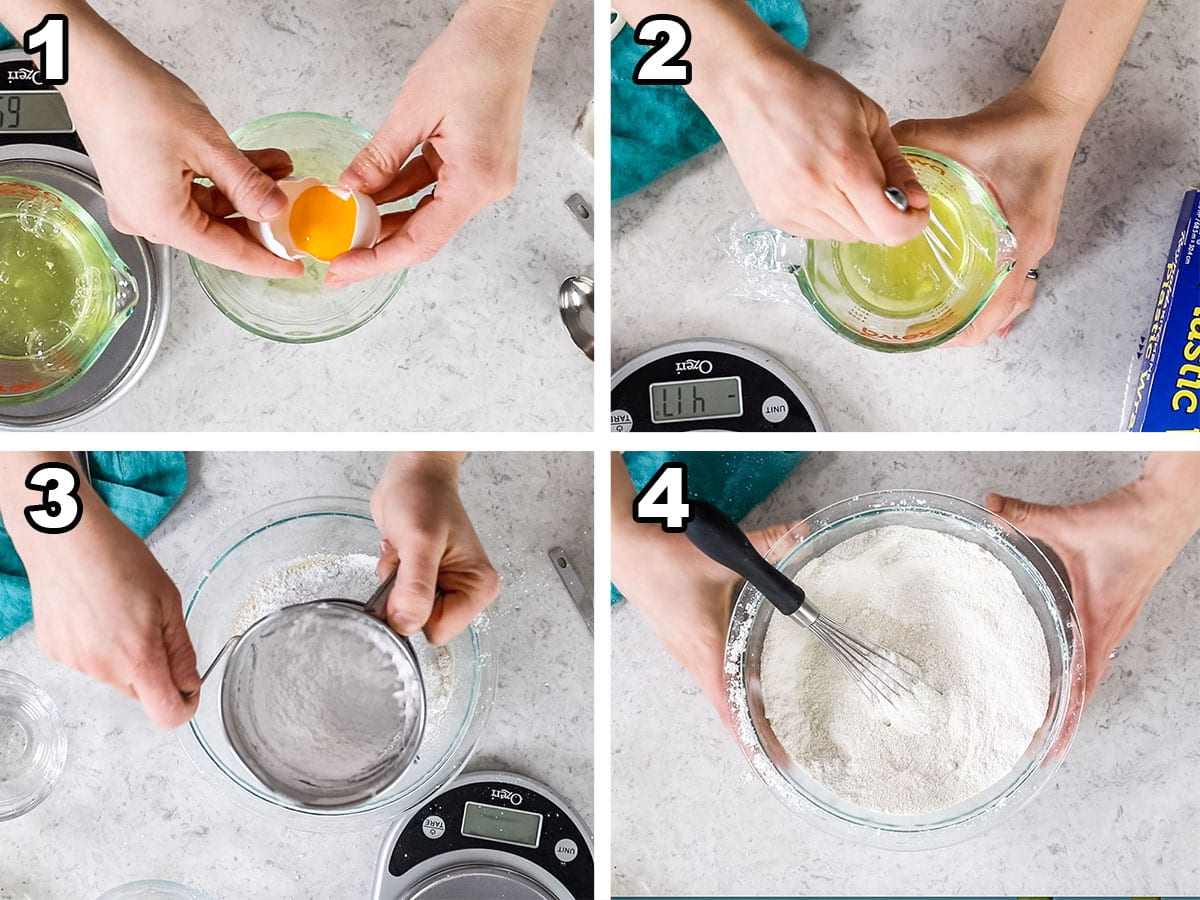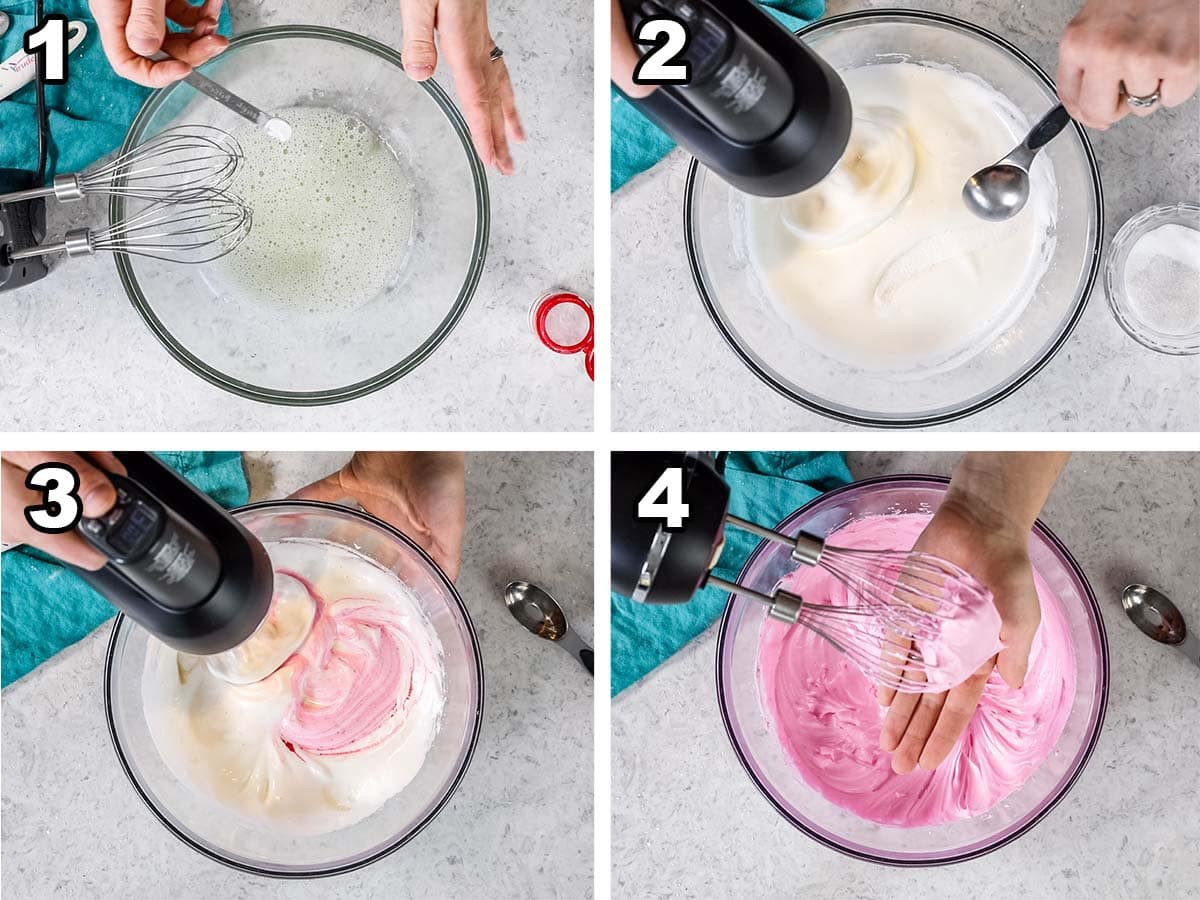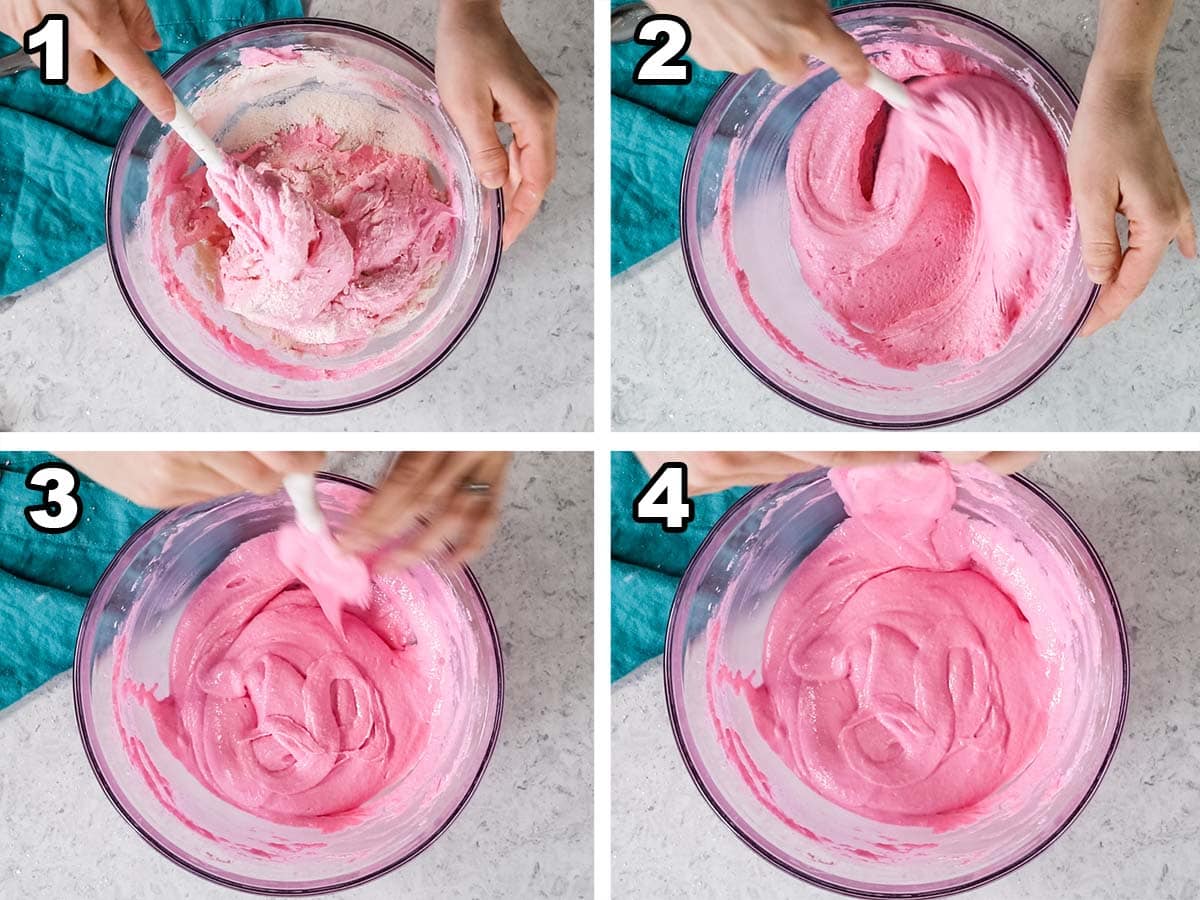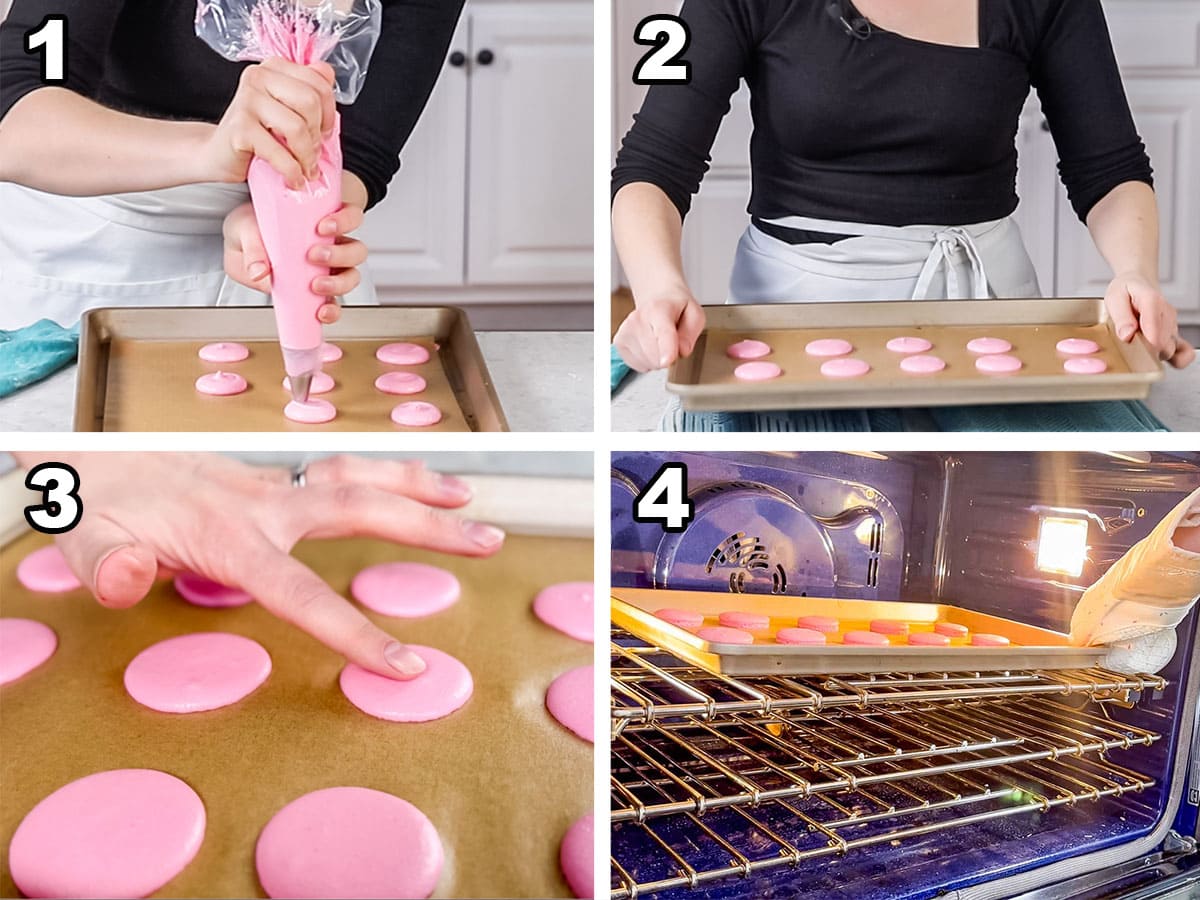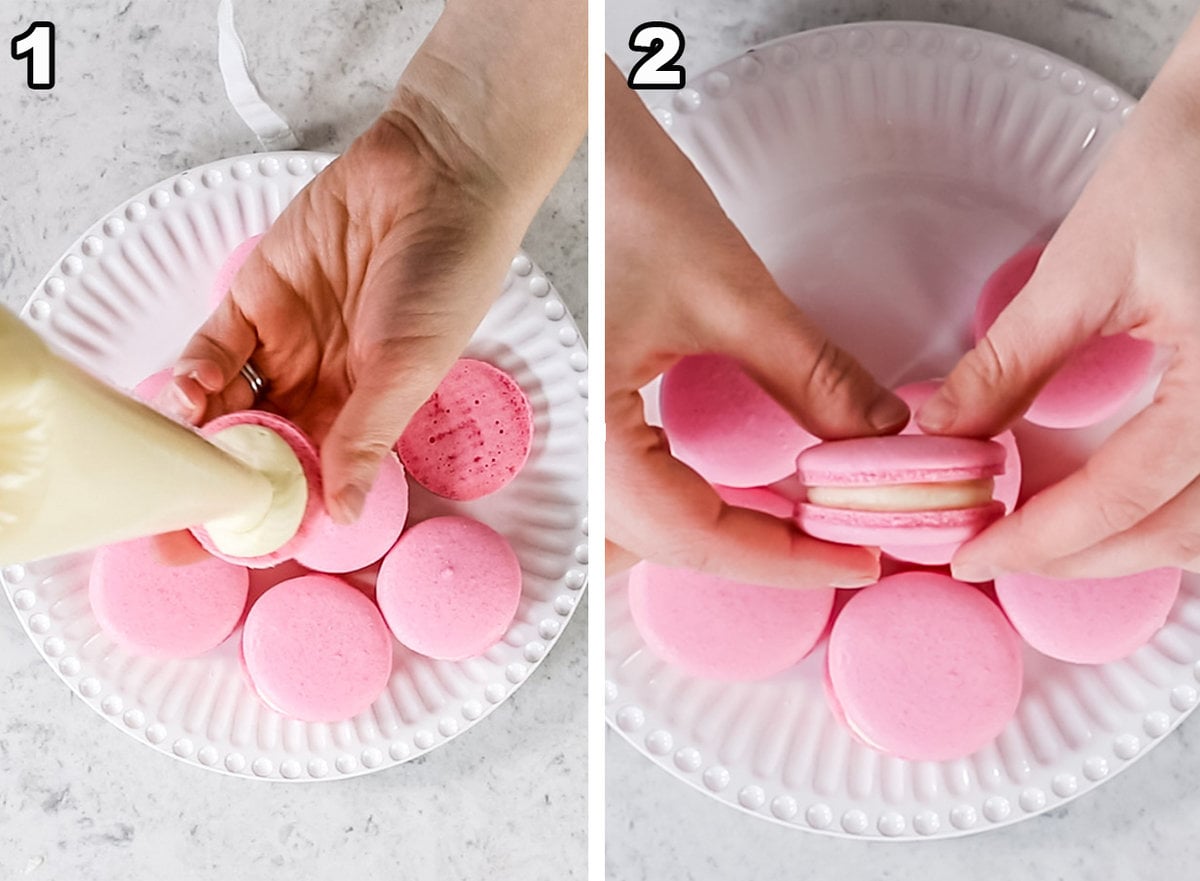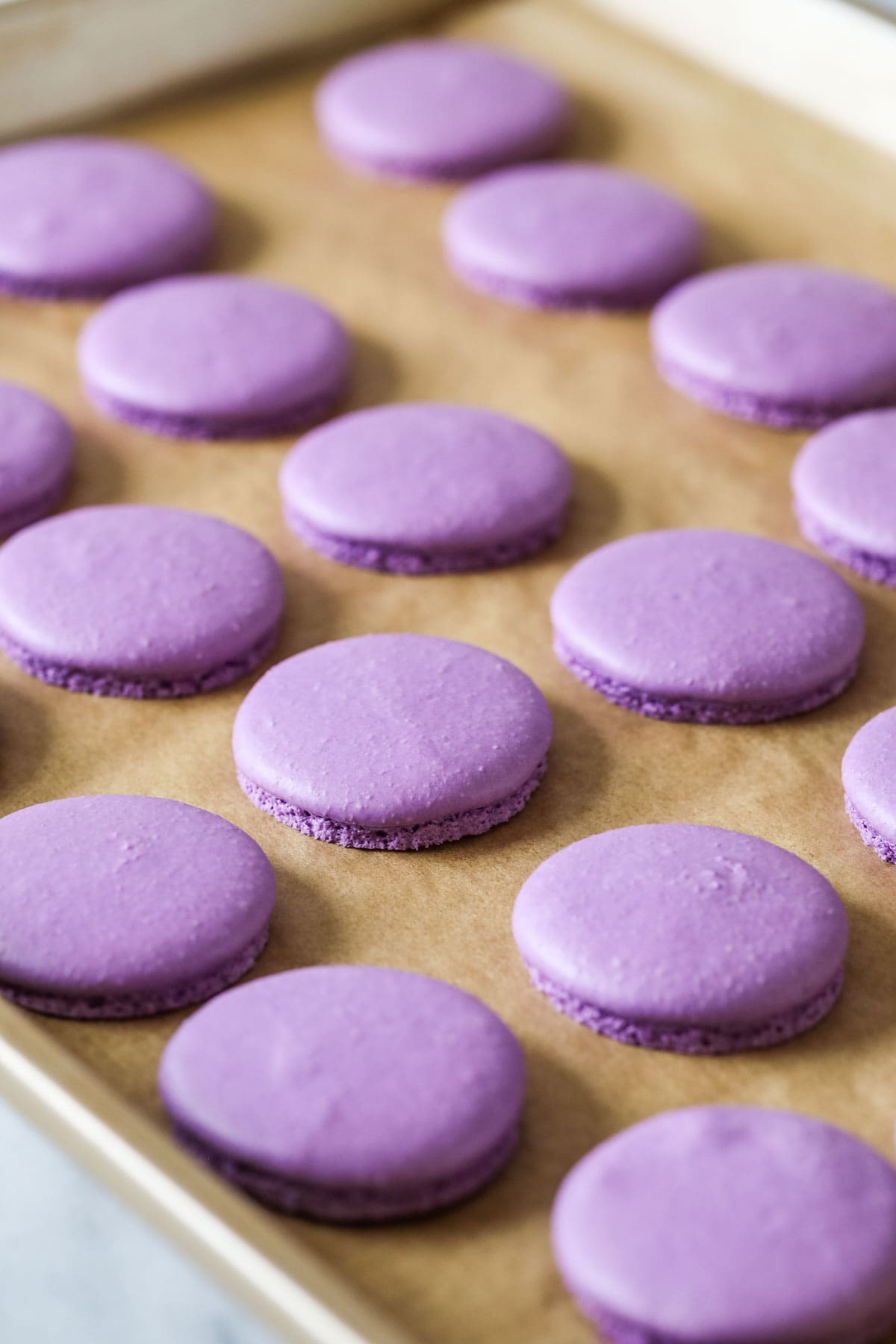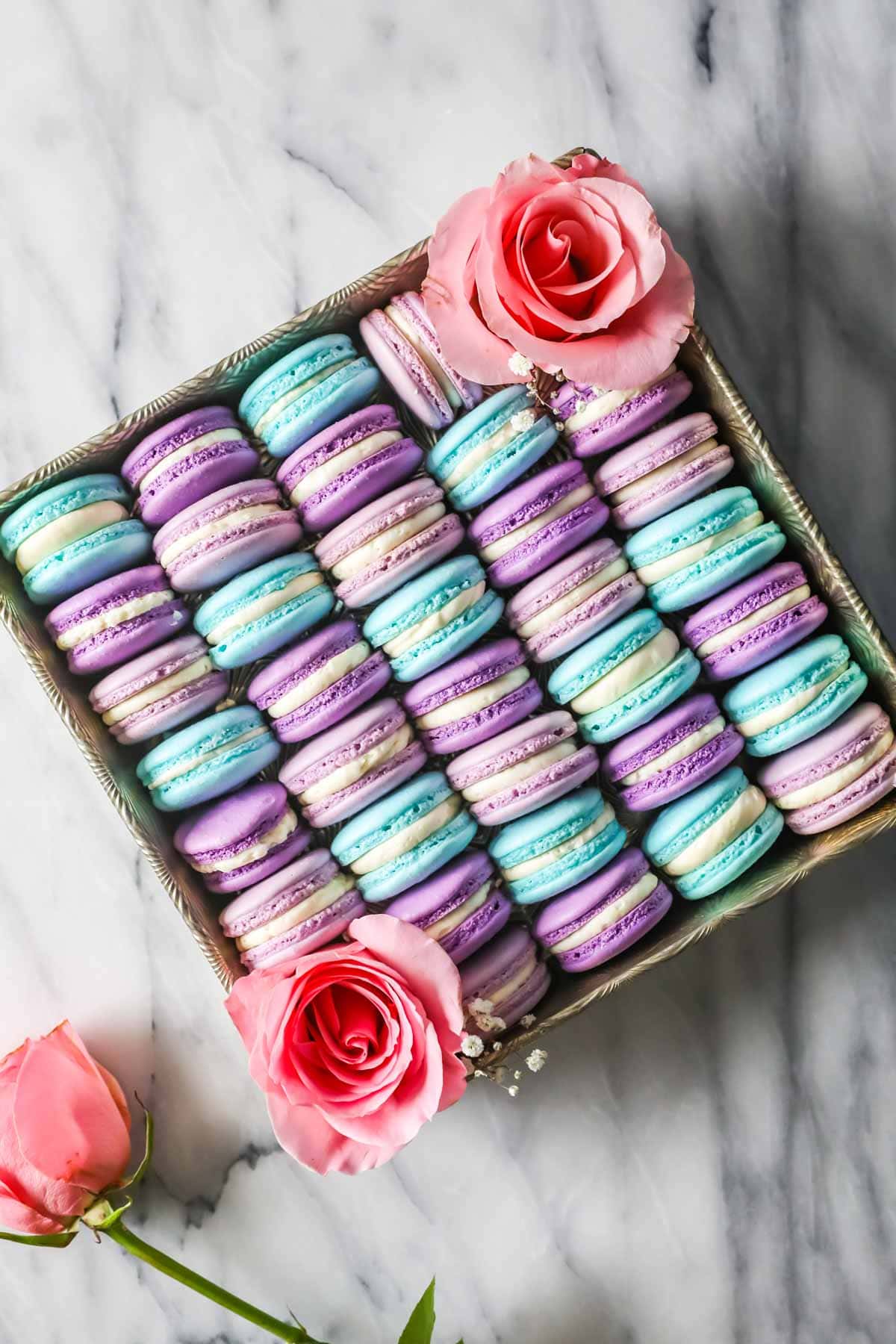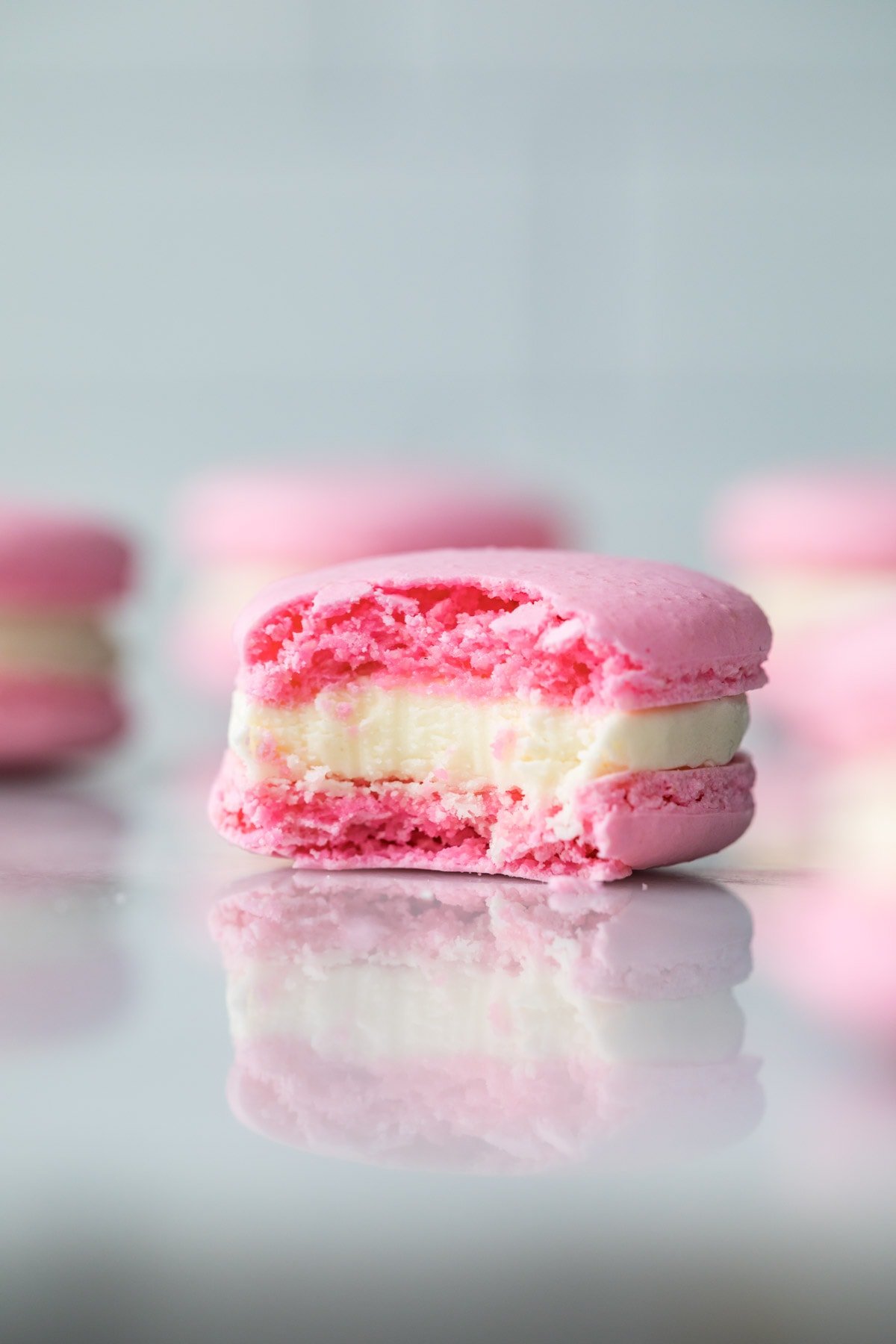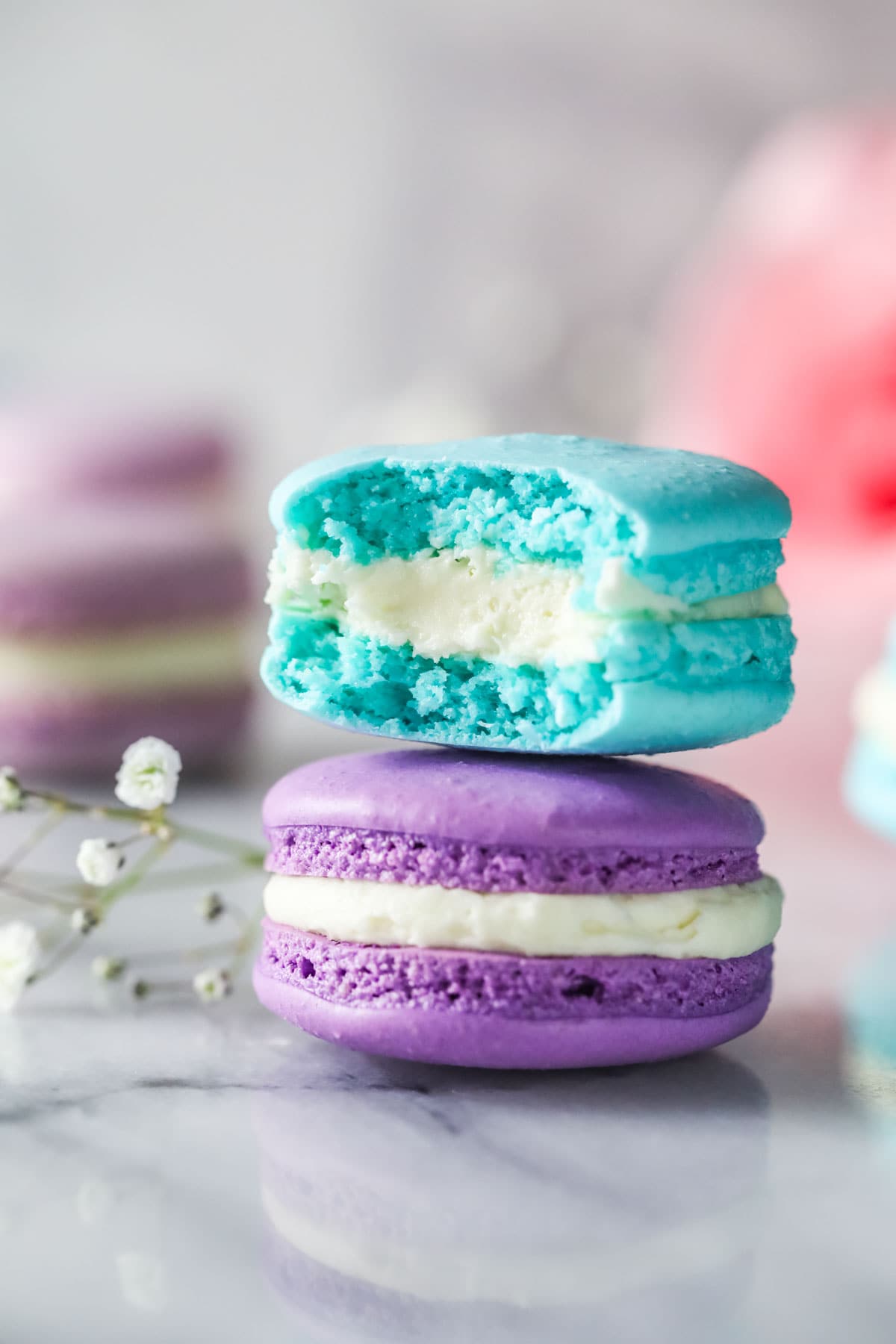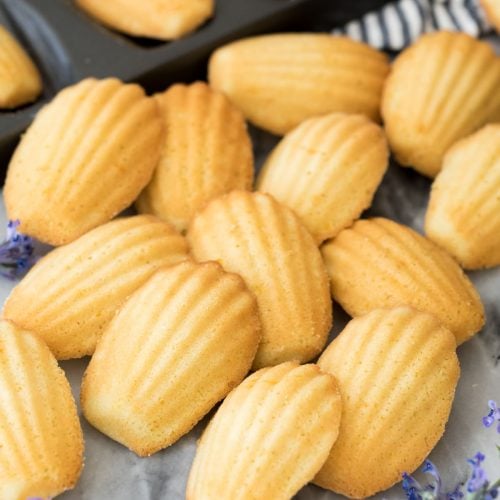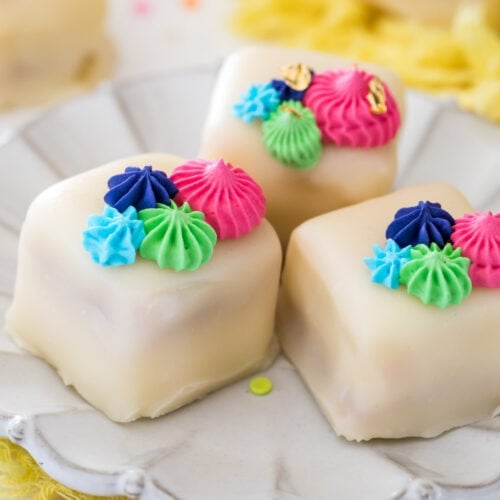My Favorite French Macaron Recipe
Whew. Developing this French macaron recipe was an experiment unlike any other and really took me back to my research roots. I tested over 35 variations, tweaked and re-tested each multiple times, went through over 12 dozen eggs and 15 lbs of almond flour. Over 2000 macaron shells made their way through my kitchen. I spent sleepless nights troubled by hollow shells and spent hours reading, researching, and, sometimes, pulling my hair out. All this to say, a heck of a lot of work went into getting this recipe just right. And while no macaron recipe is truly “foolproof” (what a myth!), I really developed and wrote mine with you in mind. This (very detailed) recipe has been perfected to set you up for success in your own home. Not to be confused with macaroons (a hearty, snowball-looking coconut cookie that comes together in a mere 15 minutes), macarons are light and delicate and a bit diva-esque in nature. They can trace their origins back hundreds of years, but the sandwich cookies as we know them have only made an appearance as of the 1930s. There are several methods for making macarons, but today I’m sharing a French macaron recipe. It’s possibly the most popular of the methods and is, in my opinion, the easiest one to master and the best for beginners (I think the meringue is easiest to manage). I’ve packed in tons of tips, tricks, and troubleshooting notes as well as a detailed video tutorial, so let’s get to it!
What You Need
Nearly every French macaron recipe you encounter will use the same ingredients you’ll find below, often with differing ratios and sometimes with a wild-card ingredient thrown in. While cornstarch and egg white powder have made had a presence on the scene, I’ve found both to be unnecessary (though if you persistently struggle with hollow shells, you can try one or the other or both). Let’s go over the ingredients I use.
Ingredients
Almond flour. A must in this (and any) French macaron recipe (and a key ingredient in my Linzer cookies), I recommend a “super fine”, blanched almond flour. As the name suggests, it’s very fine and yields smooth, bump-free macaron tops. Powdered sugar. Also known as “confectioner’s sugar” or “icing sugar” this ingredient is simply made of finely ground granulated sugar and cornstarch and is essential in flawless French macarons. It lends sweetness and stability to the cookies.Granulated sugar. If you can get your hands on superfine or caster sugar, that’s great and will work here wonderfully, but if not regular granulated sugar will work. This sweetens the macarons and is essential for stabilizing our egg whites (meringue).Egg Whites. It’s essential that when you separate your egg whites you do not get any egg yolk mixed in with the white, or your whites will not whip properly. I recommend using egg whites from eggs you’ve cracked yourself; while some people may find success with pasteurized egg whites sold in cartons, those yield mixed results and may not work for you.Cream of tartar. Cream of tartar is an acid and a stabilizer that helps strengthen your meringue. Is it strictly necessary? No, many people make macarons without it, but I consider it to be the training wheels of my meringue and recommend using it for best results. Half a teaspoon of white vinegar or lemon juice could also be substituted. Flavor. I use vanilla extract and a pinch of salt. If you’d like to try different flavors you certainly can. Food coloring. Entirely optional, but I wanted to touch on this as most people do choose to color their macarons. I personally recommend using gel food coloring (I like and use Americolor gels), as liquid coloring can add too much moisture to the meringue and a little gel goes a long way in giving you a vibrant color. Some people also use powder food coloring, I have never used this and so can’t advise.
SAM’S TIP: If you cannot find “superfine “almond flour, simply combine the almond flour and powdered sugar in a food processor and pulse 15 1-second pulses, stir, and repeat before using. Don’t overdo it or you’ll over-process the almond flour and end up with almond butter! At this point I do not have any recommendations for other substitutions for any of these ingredients.
Equipment
In addition to the ingredients, I also have a few equipment recommendations.
Glass or metal mixing bowls. Avoid rubber, plastic, or silicone bowls, which may be harboring hidden grease and can hinder your meringueKitchen scale. Important for ensuring your ingredients are weighed properly. A kitchen scale is inexpensive and will improve all of your baking, here is a link to the scale I use at home and a guide on how to use a kitchen scale. Electric mixer. A must for the meringue. I typically use my hand-held mixer because I feel I can keep a better eye on the meringue, but a stand mixer would work just fine, too. Don’t try to hand-whip this one.Sifter or fine mesh sieve. Helpful to sift out any lumps in the almond flour or powdered sugar. I use an old-fashioned crank sifter. Piping bag with piping tip. I use large disposable piping bags fitted with an Ateco 804 tip (though a similar-sized tip would work as well!). I used to use the Wilton 12 tip but feel the larger Ateco tip makes the job a bit easier.Parchment paper. Use this for lining your baking sheets, be sure to trim it if needed so it fits neatly into the tray. Silpat may alternatively be used, but I personally prefer parchment.Baking sheets. I use standard cookie sheets.
Another note on the kitchen scale: Every French macaron recipe I’ve read has stressed the importance of using weights rather than cups and insisted your macarons won’t turn out otherwise. While I absolutely agree that weights are the preferred way to prepare this recipe, that’s really the case with any baking recipe, and I haven’t found it to be more true with macarons than with, say, Oreo cake or Madeleines. I’ve included measurements in both weights and cups, but, as with every recipe I’ve shared, weights are preferred and if you are using cups and find yourself struggling, this is the first change you should make.
How to Make French Macarons
I’ve broken down the process into several steps, let’s go over each of them in detail (a lot of detail, I know, but I want to be thorough!). Gather all of your ingredients and materials in advance and read through the steps carefully, that way you can move smoothly and efficiently through the steps.
Preparation
SAM’S TIP: It is essential that your equipment be clean, dry, and grease free, or your meringue may never reach the stiff peaks needed for this recipe. If you struggle with your meringue, take a splash of vinegar or lemon juice and wipe down the bowl and the beaters that you’ll be using before beginning. This will remove any hidden grease that could thwart your meringue.
Prepare the Meringue
This step will be familiar to those of you who have dabbled with my meringue cookies or angel food cake. Meringue can be fussy and even rainy weather can interfere with stiff peaks, but you’ve set yourself up for success in the preparation step and you have all of your ingredients and equipment ready. You’ve got this! SAM’S TIP: I used my hand mixer when filming the video for this macaron recipe, but you can absolutely use a stand mixer (and I have, many times!) to make your meringue. Once you reach stiff peaks, you will stop using the mixer and switch to mixing by hand with a spatula. You’ll read different things about how far to take your peaks when making the meringue. Some recipes go to super-stiff peaks where the meringue balls in the whisk and some barely go beyond soft peaks. I go to stiff peaks, but once I reach this point, I stop. In the next step of the recipe, we’ll be deliberately deflating our meringue, so I don’t like to go much past the point of my peaks just being stiff when I lift the beaters out of the meringue. Going further just means more mixing, and I find it also makes my macarons more likely to be hollow!
Macaronage
So what is “macaronage”? This fancy French word is simply referring to the process of mixing our batter until it is homogenous and ready to be piped, and the way in which we do it. It’s critical that this step be done properly and to just the right point in order for any macaron recipe to turn out properly. Don’t worry, I’ll show you how below. SAM’S TIP: You may notice I don’t give a suggested time for how long it takes to whip the meringue or do the macaronage. This is because this will vary greatly from kitchen to kitchen depending on your exact equipment and environment. It’s best to go by consistency of the batter rather than by a specific set amount of time. The more you make French macarons, the more comfortable you’ll become with this process and you’ll ultimately just know when your batter feels right. Some cues that I like to look for are that my batter appears smoother and shinier. When I lift my spatula out of the batter, it ribbons off of it smoothly without breaking. Some people like to say that the batter “flows like lava”, but as someone who has spent very little time studying active volcanoes I’ve found that advice to be particularly unhelpful. Instead, I check that I can smoothly make a figure “8” with the batter and that it holds it shape for 15 seconds or so, but by 15 seconds the edges have lost their sharpness and the ribbon is flowing back into the batter. If the edges remain rigid without moving, I go another 5-10 folds then check again. If the “8” ever disappears within 15 seconds, I’ve gone too far (the worst because there’s nothing to do here but start over — check your batter often!).
Piping & Baking French Macarons
Filling Macaron Shells
You’ve done it! You’ve made beautiful French macarons! Congratulations! Or, if yours turned out not-so beautiful, just eat the evidence and try again. No one needs to know. Not to be confused with the troubleshooting section further down in the post, please see that for specific issues you may be running into!
Troubleshooting
This section could be a post in and of itself and I may write a separate troubleshooting post (let me know if that’s something you’d like to see!). The truth is there are so many ways a macaron recipe can go wrong and so many factors to consider. I’ll briefly address a few main issues and some of the most common fixes.
Why are my macarons hollow? This is a common issue and there are unfortunately many things that can cause this — from over-mixing your batter, to under-mixing it, to your oven running too hot, or too cold, or even the weather. Unfortunately, figuring it out usually requires experimenting and I recommend you try lowering your oven temperature first to see if that does the trick, then raising it if it doesn’t. Watch the video and make sure you are doing the macaronage step properly. Whatever you do, don’t toss your hollow shells! Just fill them and refrigerate in an airtight container for 24 hours (this is often known as “maturing”). After maturing, you’ll likely find your macarons full and perfectly delicious, no need to waste them!Why are my macarons cracked/look like volcanos? Possibly the macarons did not rest long enough before going in the oven (did they have a dry surface?) or not banging the pans firmly enough before resting.Why do my macarons look wet/wrinkly on top? Possibly too much food coloring, under-baking, or over-mixing the batter. If your tops look speckled, this could also be due to an oily batch of almond flour.Why don’t my macarons have feet? Most often this is due to not resting the macarons long enough, however resting for too long can also cause the feet to be quite small. Check for your macarons to have a nice skin on top then pop them in the oven. If your macarons have feet when you remove them from the oven but the feet shrink as they cool, this could be caused by under-baking or a too-drastic change in temperature (is your kitchen very cold or drafty?).Why did my macaron feet spread so much? Over-mixing the batter or baking on an oven temperature that’s too high are your most likely culprits. Why did my macarons stick to the parchment paper? Typically due to under-mixing the batter or under-baking the macarons. Aging your egg whites can also help with this!Why did my macarons have points? Typically a result of batter that is under-mixed. Banging the pans and piping as indicated should settle any tips, if it doesn’t the batter needed to be deflated more.
This is not an exhaustive list and I’ve tried to condense the information as much as possible, as I could easily go on for thousands of words about this subject (and let’s face it, I’ve already written a novel, and how many grumpy comments have I gotten in the past from people saying they don’t want a novel from me 😅)! The truth is, there’s no such thing as a “foolproof” recipe, and what works in one kitchen simply may not in another. Chances are your journey will include some wonky looking macarons at one point or another and will require some fine-tuning. I’m not saying this to intimidate you, but to encourage you if perhaps your first batch isn’t perfect. Macaron making is a worthy endeavor and a delicious skill! Be patient with yourself, be willing to experiment (raise or lower your oven temp, etc.), and take notes as you go so you know what to change next time! You’ve got this, and I can’t wait for you to try this macaron recipe for yourself! Enjoy! Let’s bake together! I’ll be walking you through all the steps in my written recipe and video below! If you try this recipe, be sure to tag me on Instagram, and you can also find me on YouTube and Facebook
More Recipes to Try

